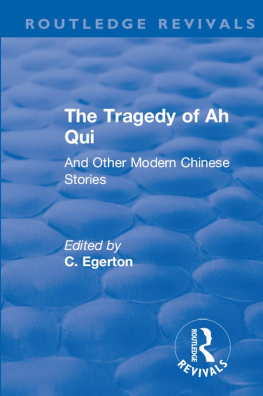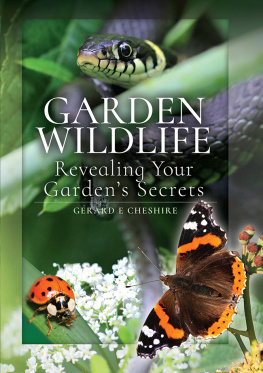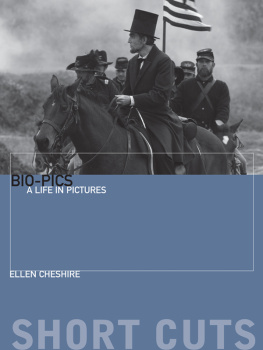Geoffrey Egerton-Warburton
In a Cheshire Garden
Natural History Notes
Published by Good Press, 2021
EAN 4064066128357
PREFACE.
Table of Contents
These Notes appeared from April to June this year in The Warrington Guardian and afterwards came out in a de-localised form in The Staffordshire Weekly Sentinel.
I am indebted to the kindness of Mr. P. Ramsdale, of Heatley, for the photographs of The Old Church, The Yew-tree, and The Flower Garden (as it was some years ago).
My thanks are due also to Mr. Garrett for kindly allowing me to use his very interesting photograph of The Two Nests referred to on page .
I.
Introductory.
Table of Contents
Although much of the neighbourhood has become semi-urban and any idea of rural seclusion is destroyed, at least in summer, by the crowds that find their way to it from Manchester and other large towns, yet the Cheshire village of Warburton in which this garden is situated is a real country place still. How long it will remain so is another thing. One salt works has been set up at Heatley about a mile away and we are now (1912) promised another, while there is every prospect of land being let for works in Warburton itself. Who knows, in a few years perhaps the whole place may be reduced to the desolation of another Widnes. Then, when it has become a rare thing to find even a blade of grass on the dreary black waste or to see any bird but a grimy sparrow, a record of what was once here may be strange reading.
The garden itself about which I write is quite on the northern boundary of Cheshire, in old days divided from Lancashire by the Mersey only. The soil is light and sandy, not far from the rock in places and in places with water at a very little depth below the surface. It is well suited to hollies and rhododendrons, both of which grow abundantly and luxuriantly, as also do yews. There are a good number of ordinary deciduous trees, chiefly on the old bank of the river, such as oak, sycamore, chestnut, birch, beech, and alder, but no conifers of any age except one or two Scotch firs. There is one flourishing deadara which I planted myself and a few young Austrian pines that seem to be doing well.
A spruce fir that I once planted behaved in an extraordinary way; instead of growing straight, it shot up in a zigzag fashion, the leading shoot one year going off at an angle of 60 degrees or so, and the next year harking back and starting in the opposite direction at about the same angle.
Few of the trees can be more than 80 years old. I think most of them would have been planted by my father, who was rector from 1833 to 1849. There is however a remarkable old yew in the adjoining churchyard. The half of it, just below where the branches spring, measures nearly nine feet round. The other half has entirely gone, so has practically the whole of the substance, the wood of the trunk, and what is left of the still standing side is little more than a shell with a coating of bark. Notwithstanding this there is quite a fair-sized head of leafy young branches (which by the way has greatly increased since I first remember the tree 40 years ago) growing up amidst the ruins of the old far-reaching boughs. These yet remain to tell something of the wide and grateful shade they once afforded to our "rude forefathers" as on summer Sundays they waited for service to begin, just as I remember the last generation gathered and gossipped under younger yews when this was the Parish Church. This yew is the "thousand-year-old tree" of the clerk's tale to visitors, and if one thinks how many years of slow growth it must have taken to form a trunk of that thickness, say 18 feet in circumference, and how many more for it to have decayed away to its present condition, it does indeed carry us back to an early date in English history when the little green shoot that sprang from the crimson-coated seed first saw the light.
One great drawback from a gardener's point of view is the prevalence of strong, cold, N.-W. winds in spring. The winters are not so severe as they often are further south, but the late spring frosts are sometimes disastrous. We have had potatoes cut down by frost as late as June 21st, but the worst spring frost I have known was in May, 1894, just about the time that Queen Victoria came to Manchester to open the Ship Canal. On three consecutive nights, May 19, 20 and 21, there was frost, and its intensity seemed to increase each night. Not only were potatoes cut, but garden peas and many hardy herbaceous plants and even common weeds. (I noticed that those with a northern aspect suffered least.) The shoots and buds of roses were scorched, and the young leaves of most trees and shrubs. Hollies suffered especially, but even yew and rhododendron, oak, sycamore, and chestnut did not escape. The only tree that weathered the cold with impunity was the hawthorn, the tenderest leaves and tips of which were not injured. (This was not the case though in the severe frost of Easter 1903.) Royal, male, and lady ferns were shrivelled up to a greater or less degree, but parsley and oak fern were unharmed.
We miss one gardener's friend here, but we escape the attentions of one enemy. Though frogs are common enough, toads are very rare. I remember to have seen only one during all the many years I have known the garden. On the other hand, whilst I have a dim recollection of having once found an old snail-shell, I cannot say for certain that I have ever seen a snail, though of shell-less slugs in all sizes there is no scarcity.
II.
Weeds and Alien Plants.
Table of Contents
A slight knowledge of botany adds greatly to the interest of a garden, and is besides often of practical value. With such knowledge, one forms a habit of looking even at weeds with some interest, and this has led to my finding several strange plants among them. I have for example come across the following in the kitchen garden:
"Saponaria vaccaria," with its curious angled calyx and pretty pink flower.
"Galium tricorne," very much like common goose-grass or cleavers, but rare in England, and quite unknown in this neighbourhood.
Annual mercury (closely allied to the common perennial Dog's mercury), green and dull-looking, only of interest because it is rare.
"Holosteum umbellatum," which again is rare and not much more attractive to the casual observer.
"Draba muralis," allied to "Shepherd's purse," and not unlike it, but as rare as that is common.
"Melilotus officinalis," a graceful yellow pea-flower. When this first appeared it was quite a stranger in these parts, but afterwards for several years it was continually turning up in different corners of the garden, indeed even in 1911, twenty-six years since its first visit, I found a stray specimen.
"Ranunculus arvensis," a weak-looking buttercup with curious rough seed vessels.
"Scandix Pecten-Veneris," an ordinary unattractive umbelliferous plant, but with extraordinary long beaks to the fruit, which are supposed to be like the teeth of a comb. Both of these are I believe common in other parts of the country, but they are unusual here.
"Poa nemoralis," a stranger grass of elegant growth, came one year in the rougher part of a rock-border. It was made welcome and kindly treated, but though allowed to follow its own devices and though several seedlings sprang up round it, they were all gone in a year or two. A rarer grass still, "Setaria glauca," once turned up in a cucumber frame.












